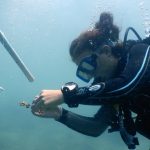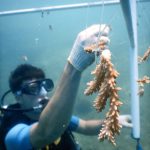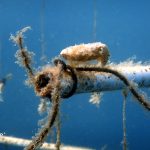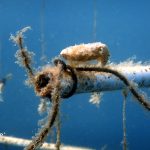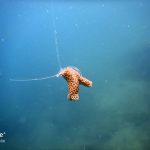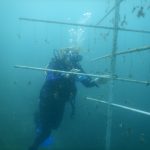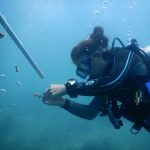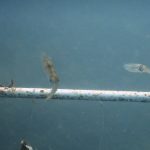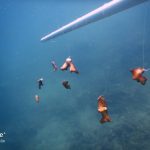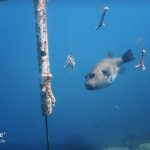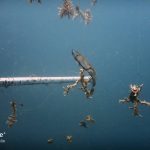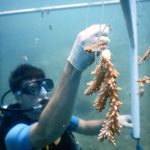There are some beautiful and thriving reefs here near SORCE, but there are also reefs that have been damaged by storms, bleaching, and fish bombing. These reefs are damaged, but restoration efforts have the potential to help them recover.
Along our House Reef, we have three coral trees that we have built in a bid to do just that. Each of the trees is located in a different place along our House Reef. These trees are spread out to experience different environmental conditions – for example, one is close to the river input from land, so gets more silt input, while another experiences strong current.
The trees are planted with broken bits of coral that we find along House Reef – either from storm, anchor, or other damage – and because they are suspended in the water column, they get nutrients and sunlight from all sides and can grow faster and more reliably than if they had been left on the bottom. These coral trees will create a nursery stock of hard corals that we can use for future coral planting to help restore the reef.
Currently, we are monitoring growth of the corals to see which species grow best in different environmental conditions and which species will be best for reef restoration. We are working to build coral tables as well to expand the capacity of types of corals that we can grow and use for planting.
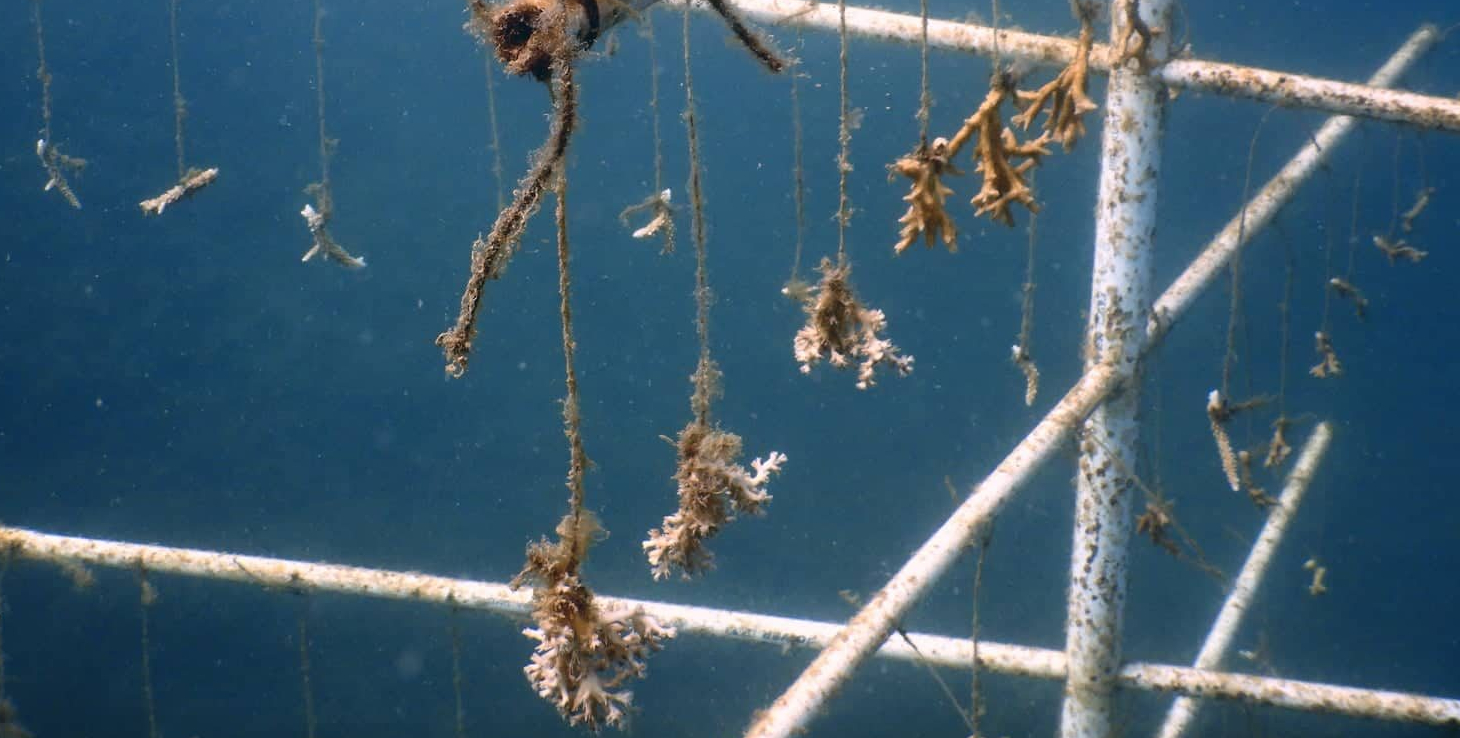
We need to have a diverse set of coral species in our nursery because when we plant coral for reef restoration, we want to match the community diversity found on the reef. Otherwise, we would be biasing the creatures that can live on the restored reef to those that depend on the restored coral species. By having a diverse nursery stock, we will have the capacity to restore complex reef ecosystems that support a diverse range of other species.
Right now, our coral tree nursery work includes cleaning and measuring. We go out to clean each of the trees about once a week and the tree and the fishing line are both scrubbed so that the coral doesn’t have to compete with algae. Once a month, we measure and record how much each coral piece has grown so that we know how successful our efforts are and when corals will be large enough to support reef restoration efforts.
Volunteers and interns carry out most of the measuring, planting, and cleaning on the trees so that we can collect enough data to have successful reef restoration! We would love to have you join us and experience it for yourself – there’s something quite special about seeing how much the coral has grown each time you go to measure it, and to see wildlife around the trees as they become a familiar part of our House Reef. We can’t wait to move on to reef planting once these corals are big enough!
If this is something you’d like to get involved in or hear more about we’re happy to answer questions – send along a message on social media or by email at enquiries@sorce.org, and be sure to stay up to date with our many activities on Instagram and Facebook!
Written by Aubrey Pelletier, pictures co-taken and edited by Elin Thompson.
